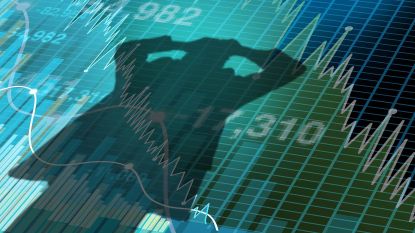Stocks started the week deep in the red as the November jobs report continued to weigh on investor sentiment. This morning’s data, which showed services sector activity and factory output were both stronger than economists expected, provided additional signs that the U.S. economy remains resilient despite the Federal Reserve’s best attempts to slow things down.
Specifically, the Institute for Supply Management’s non-manufacturing index – which measures activity in the services sector – rose to 56.5 in November from October’s reading of 54.4. This was well above the consensus estimate for a decline to 53.7. A separate report from the Commerce Department showed factory orders were up 1% from September to October, more than the 0.7% increase economists were expecting.
Sign up for Kiplinger’s FREE Investing Weekly e-letter for stock, ETF and mutual fund recommendations, and other investing advice.
Subscribe to Kiplinger’s Personal Finance Be a smarter, better informed investor.
Save up to 74%
Sign up for Kiplinger’s Free E-Newsletters Profit and prosper with the best of Kiplinger’s expert advice on investing, taxes, retirement, personal finance and more – straight to your e-mail.
Profit and prosper with the best of Kiplinger’s expert advice – straight to your e-mail.
“Good economic news is bad news for stocks, as it will keep the risk elevated that rates might have to end up higher later next year,” says Edward Moya, senior market strategist at currency data provider OANDA. “The risks that the Fed might need to do more remain elevated and that is why this economy needs to head to a recession. This next recession, however, won’t be rescued by quick Fed easing or a fiscal response, as that will fuel inflation risks.”
Today’s selling was widespread, with all 11 sectors closing in the red. Energy (-3.0%) was the biggest decliner, with consumer discretionary (-2.9%) a close second on weakness in Tesla (TSLA (opens in new tab)). The electric vehicle maker plunged 6.4% after reports from Bloomberg and Reuters suggested it is planning on lowering December production at its Shanghai, China, plant by 20% from its November output. Tesla denied the media reports.
As for the major indexes, the Nasdaq Composite slumped 1.9% to 11,239, the S&P 500 Index fell 1.8% to 3,998, and the Dow Jones Industrial Average shed 1.4% to 33,947.
Use High-Yield ETFs for DefenseInvestors might want to brace for some choppy trading through the Federal Reserve’s upcoming policy decision and the latest consumer price index (CPI) reading – both slated for next Wednesday. “After [Fed Chair Jerome] Powell’s speech last week, I would have expected the market to perform well heading into the next Fed decision. Then job market data offset such traction,” says Guido Petrelli, founder and CEO of market insight firm Merlin Investor. “The market now seems to take a conservative position while waiting for more clarifications from the Fed meeting.”
Petrelli says it’s likely the Fed will raise rates by 0.50%, as expected, but that “a crucial indication” will come in the Powell presser that will follow the policy announcement. “That’s why I wouldn’t expect any significant positive move from the market this week, with some reasonable drop coming from playing defense.”
Investors playing defense over the long term have plenty of options at their disposal. In addition to healthcare and consumer staples stocks – which tend to do well in recessionary environments – investors can also seek out safety in dividend-paying names. While there’s no shortage of dividend-paying stocks on Wall Street, you can also take a more diversified approach with high-yield ETFs. The nine names featured here cover both conservative and aggressive strategies but they all have one thing in common: healthy yields that are well above the broader market.
